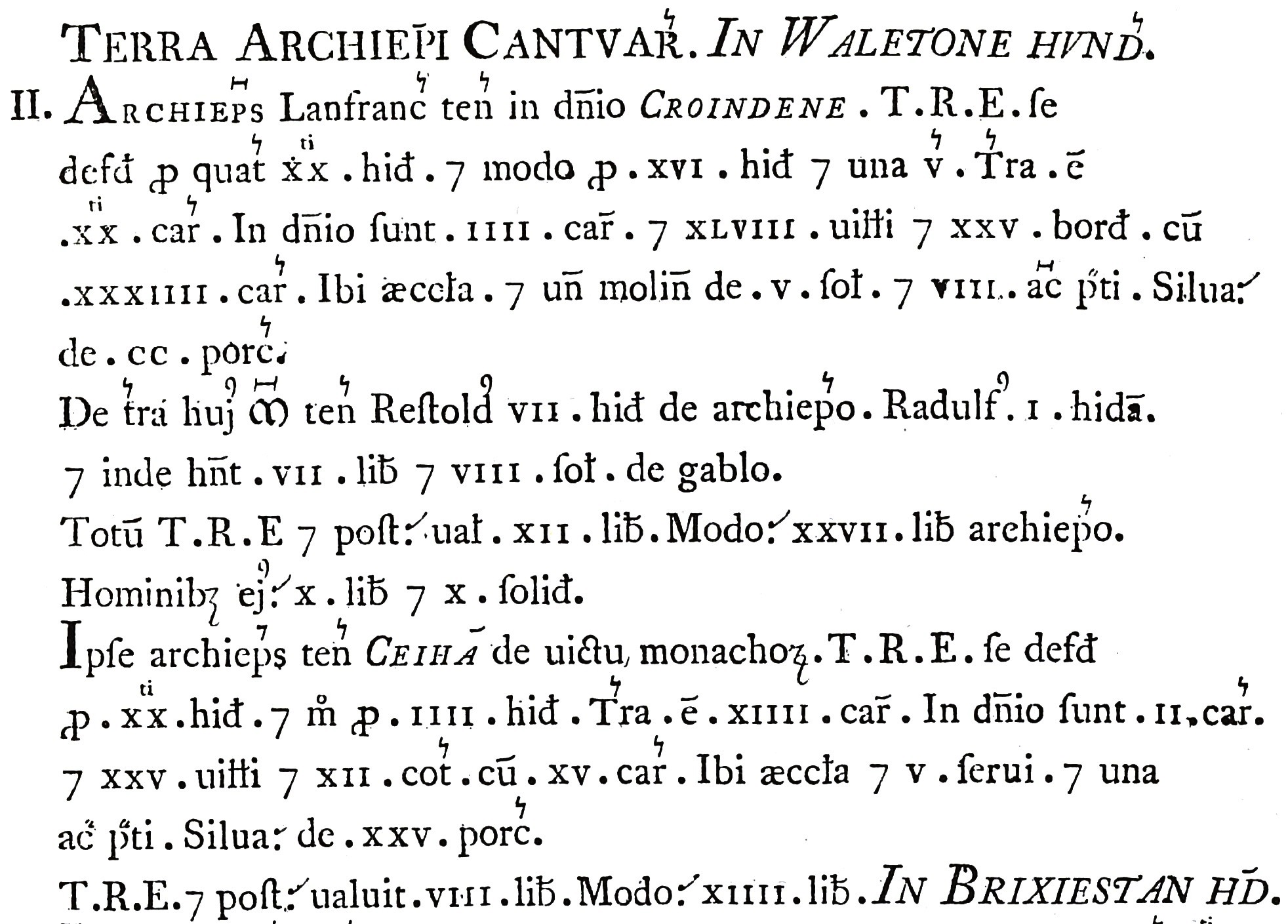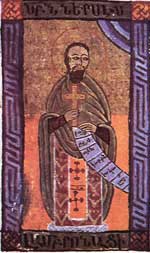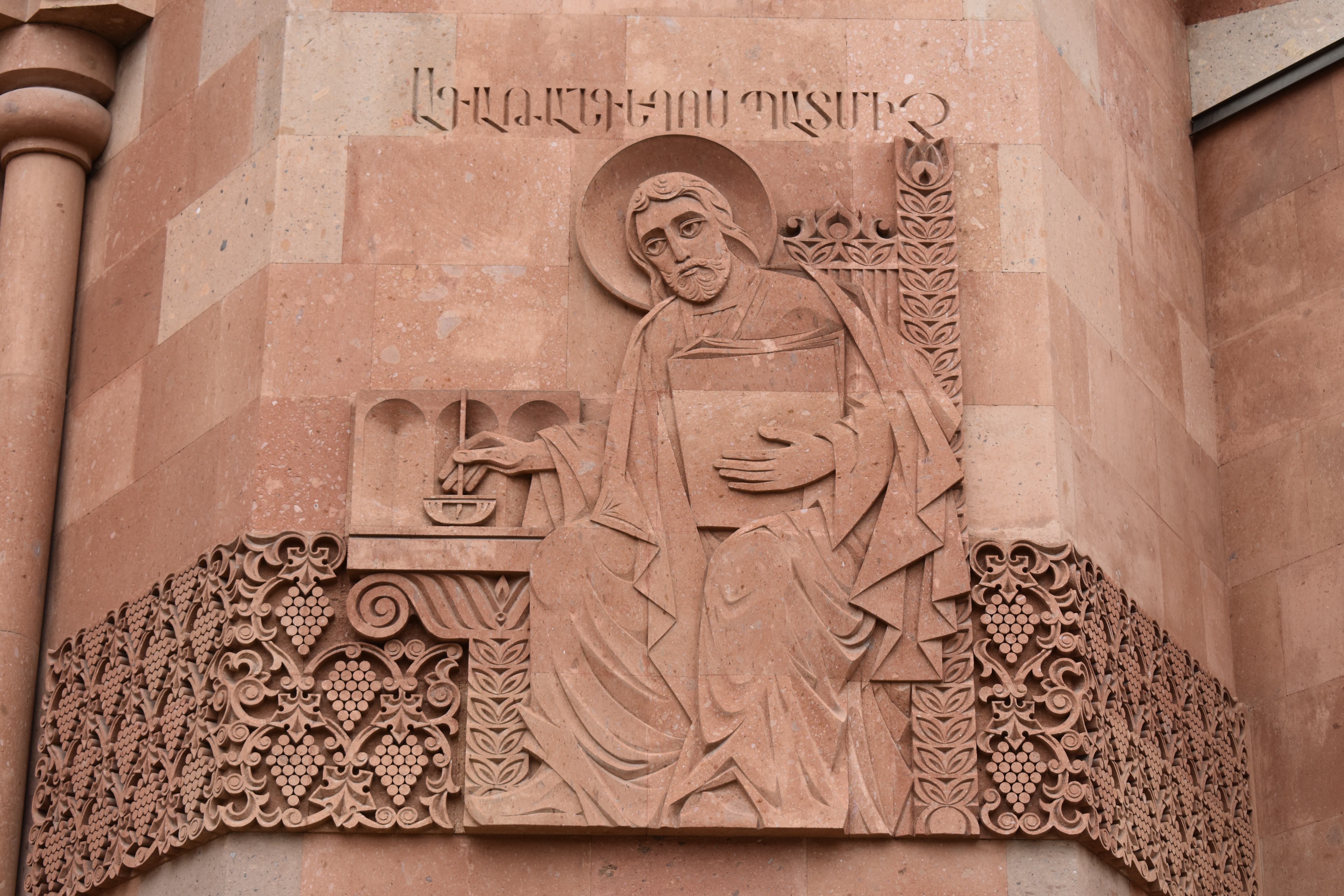|
Robert W. Thomson
Robert William Thomson (24 March 1934, Cheam, London UK – 20 November 2018, Oxford) was Calouste Gulbenkian Professor of Armenian Studies at Oxford University. Thomson graduated from the University of Cambridge with a degree in classics, then studied at the Halki seminary in Turkey. Thomson received his PhD from Cambridge after defending his doctoral dissertation on Armenian and Syriac versions of Athanasius of Alexandria's works. When an Armenian Studies Professorship was established in the Faculty of Arts and Sciences at the Harvard University in 1969, Thomson was appointed to the chair which was subsequently named in honor of Armenian saint and scholar Mesrob Mashtots. Thomson held this position until 1992, when he accepted the Gulbenkian Chair in Armenian Studies at Oxford University in England. He retired in 2001. In 1984–1989 he was the Director of the Dumbarton Oaks Research Library and Collection. [...More Info...] [...Related Items...] OR: [Wikipedia] [Google] [Baidu] |
Cheam
Cheam () is a suburb of London, England, south-west of Charing Cross. It is divided into North Cheam, Cheam Village and South Cheam. Cheam Village contains the listed buildings Lumley Chapel and the 16th-century Whitehall. It is adjacent to two large parks, Nonsuch Park and Cheam Park. Nonsuch Park contains the listed Nonsuch Mansion. Parts of Cheam Park and Cheam Village are in a conservation area. Cheam is bordered by Worcester Park to the north-west, Morden to the north-east, Sutton to the east, Epsom, Ewell and Stoneleigh to the west and Banstead and Belmont to the south. History The Roman road of Stane Street forms part of the boundary of Cheam. The modern London Road at North Cheam follows the course of the Roman road through the area. It is designated A24. The village lay within the Anglo-Saxon administrative division of Wallington hundred. Cheam is mentioned in the Charters of Chertsey Abbey in 727, which mentions Cheam being given to the monastery of Chertsey in 6 ... [...More Info...] [...Related Items...] OR: [Wikipedia] [Google] [Baidu] |
Vazgen I
Vazgen I also Vazken I of Bucharest, (), born Levon Garabed Baljian ( hy, Լևոն Կարապետ Աբրահամի Պալճյան; September 20, 1908 – August 18, 1994) was the Catholicos of All Armenians between 1955 and 1994, for a total of 39 years, the 4th longest reign in the history of the Armenian Apostolic Church. The following three served for 39 years as Catholicos of All Armenians or Catholicos of the Great House of Cilicia: #Peter I (1019–1058) — Պետրոս Ա Գետադարձ (Catholicos of All Armenians), #Gregory II the Martyrophile (1066–1105) — Գրիգոր Բ. Վկայասէր ( Catholicos of the Great House of Cilicia) and #David IV (1590–1629), d. 1633 — Դավիթ Դ Վաղարշապատցի (Catholicos of All Armenians). The three longest reigning Catholicoi were: #) Nerses IV the Graceful (1166–1173) -- Սուրբ Ներսէս Դ. Կլայեցի (Շնորհալի), who served 53 years as Catholicos of the Great House of Cilicia, #) Constan ... [...More Info...] [...Related Items...] OR: [Wikipedia] [Google] [Baidu] |
Statutory Professors Of The University Of Oxford
A statute is a formal written enactment of a legislative authority that governs the legal entities of a city, state, or country by way of consent. Typically, statutes command or prohibit something, or declare policy. Statutes are rules made by legislative bodies; they are distinguished from case law or precedent, which is decided by courts, and regulations issued by government agencies. Publication and organization In virtually all countries, newly enacted statutes are published and distributed so that everyone can look up the statutory law. This can be done in the form of a government gazette which may include other kinds of legal notices released by the government, or in the form of a series of books whose content is limited to legislative acts. In either form, statutes are traditionally published in chronological order based on date of enactment. A universal problem encountered by lawmakers throughout human history is how to organize published statutes. Such publications ha ... [...More Info...] [...Related Items...] OR: [Wikipedia] [Google] [Baidu] |
Harvard University Faculty
Harvard University is a private Ivy League research university in Cambridge, Massachusetts. Founded in 1636 as Harvard College and named for its first benefactor, the Puritan clergyman John Harvard, it is the oldest institution of higher learning in the United States and one of the most prestigious and highly ranked universities in the world. The university is composed of ten academic faculties plus Harvard Radcliffe Institute. The Faculty of Arts and Sciences offers study in a wide range of undergraduate and graduate academic disciplines, and other faculties offer only graduate degrees, including professional degrees. Harvard has three main campuses: the Cambridge campus centered on Harvard Yard; an adjoining campus immediately across Charles River in the Allston neighborhood of Boston; and the medical campus in Boston's Longwood Medical Area. Harvard's endowment is valued at $50.9 billion, making it the wealthiest academic institution in the world. Endowment inco ... [...More Info...] [...Related Items...] OR: [Wikipedia] [Google] [Baidu] |
Armenian Studies Scholars
Armenian may refer to: * Something of, from, or related to Armenia, a country in the South Caucasus region of Eurasia * Armenians, the national people of Armenia, or people of Armenian descent ** Armenian Diaspora, Armenian communities across the world * Armenian language, the Indo-European language spoken by the Armenian people ** Armenian alphabet, the alphabetic script used to write Armenian ** Armenian (Unicode block) * Armenian Apostolic Church * Armenian Catholic Church People * Armenyan, or in Western Armenian, an Armenian surname **Haroutune Armenian (born 1942), Lebanon-born Armenian-American academic, physician, doctor of public health (1974), Professor, President of the American University of Armenia **Gohar Armenyan (born 1995), Armenian footballer **Raffi Armenian (born 1942), Armenian-Canadian conductor, pianist, composer, and teacher Others * SS ''Armenian'', a ship torpedoed in 1915 See also * * Armenia (other) Armenia is a country in the South Cauc ... [...More Info...] [...Related Items...] OR: [Wikipedia] [Google] [Baidu] |
Nerses Of Lambron
Saint Nerses of Lambron (, Nerses Lambronatsi) (1153–1198) was the Archbishop of Tarsus in the Armenian Kingdom of Cilicia who is remembered as one of the most significant figures in Armenian literature and ecclesiastical history. Life Nerses was the son of the Hethumid lord of Lambron, Oshin II, and the nephew of the Catholicos (1166–1173) Nerses IV. His mother Shahandukht was a descendant of St. Gregory the Illuminator. Nerses was well versed in sacred and profane sciences and had an excellent knowledge of Greek, Latin, Syriac, and probably Coptic. His early education was at Skevravank (Skevra monastery) which was continued at Hromkla under the supervision of his uncle Nerses and Grigor Tgha (Gregory IV the Young, Catholicos from 1173 to 1193). Ordained in 1169 at the age of 16 by his uncle, he was elevated to episcopacy and consecrated Archbishop of Tarsus in 1176. He went on to study at the Ganchvor monastery, an Armenian Apostolic church in present-day Cyprus. Nerses ... [...More Info...] [...Related Items...] OR: [Wikipedia] [Google] [Baidu] |
Moses Khorenatsi
Movses Khorenatsi (ca. 410–490s AD; hy, Մովսէս Խորենացի, , also written as ''Movses Xorenac‘i'' and Moses of Khoren, Moses of Chorene, and Moses Chorenensis in Latin sources) was a prominent Armenian historian from the late antique period and the author of the '' History of the Armenians.'' Movses's ''History of the Armenians'' was the first attempt at a universal history of Armenia and remains the only known general account of early Armenian history. It traces Armenian history from its origins to the fifth century, during which Movses claimed to have lived. His history had an enormous impact on Armenian historiography and was used and quoted extensively by later medieval Armenian authors. He is called the "father of Armenian history" () in Armenian, and is sometimes referred to as the "Armenian Herodotus." Movses's history is also valued for its unique material on the old oral traditions in Armenia before its conversion to Christianity. Movses identified hims ... [...More Info...] [...Related Items...] OR: [Wikipedia] [Google] [Baidu] |
Harvard University Press
Harvard University Press (HUP) is a publishing house established on January 13, 1913, as a division of Harvard University, and focused on academic publishing. It is a member of the Association of American University Presses. After the retirement of William P. Sisler in 2017, the university appointed as Director George Andreou. The press maintains offices in Cambridge, Massachusetts near Harvard Square, and in London, England. The press co-founded the distributor TriLiteral LLC with MIT Press and Yale University Press. TriLiteral was sold to LSC Communications in 2018. Notable authors published by HUP include Eudora Welty, Walter Benjamin, E. O. Wilson, John Rawls, Emily Dickinson, Stephen Jay Gould, Helen Vendler, Carol Gilligan, Amartya Sen, David Blight, Martha Nussbaum, and Thomas Piketty. The Display Room in Harvard Square, dedicated to selling HUP publications, closed on June 17, 2009. Related publishers, imprints, and series HUP owns the Belknap Press imprint, whi ... [...More Info...] [...Related Items...] OR: [Wikipedia] [Google] [Baidu] |
Agathangelos
Agathangelos (in xcl, Ագաթանգեղոս Agatʿangełos, in Greek "bearer of good news" or angel, 5th century AD ) is the pseudonym of the author of a life of the first apostle of Armenia, Gregory the Illuminator, who died about 332. He claims to be a secretary of Tiridates III, King of Armenia in the early 4th century, but the life was not written before the 5th century. It purports to exhibit the deeds and discourses of Gregory, and has reached us in Armenian, Greek, Georgian, Syriac, Ethiopic, Latin and Arabic. The text of this history has been considerably altered, but it has always been in high favor with the Armenians. Von Gutschmid maintains that the unknown author made use of a genuine life of St. Gregory, also of a history of his martyrdom and of that of Saint Rhipsime and her companions. Historical facts are intermingled in this life with legendary or uncertain additions, and the whole is woven into a certain unity by the narrator, who may have assumed his si ... [...More Info...] [...Related Items...] OR: [Wikipedia] [Google] [Baidu] |
Gregory The Illuminator
Gregory the Illuminator ( Classical hy, Գրիգոր Լուսաւորիչ, reformed: Գրիգոր Լուսավորիչ, ''Grigor Lusavorich'';, ''Gregorios Phoster'' or , ''Gregorios Photistes''; la, Gregorius Armeniae Illuminator, cu, Svyashchennomuchenik Grigory Armyansky, prosvetitel’ Velikoy Armenii, episkop Священномученик Григорий Армянский, просветитель Великой Армении, эпископ – ) was the 12th Catholicos-Patriarch and the first official head of the Armenian Apostolic Church. He was a religious leader who converted Armenia from paganism to Christianity in 301. He is also the patron saint of the church. Early life Gregory was the son of the Armenian Parthian nobles Anak the Parthian and Okohe. His father, Anak, was a Prince said to be related to the Arsacid Kings of Armenia or was from the House of Suren, one of the seven branches of the ruling Arsacid dynasty of Sakastan. Anak was char ... [...More Info...] [...Related Items...] OR: [Wikipedia] [Google] [Baidu] |
Socrates Scholasticus
Socrates of Constantinople ( 380 – after 439), also known as Socrates Scholasticus ( grc-gre, Σωκράτης ὁ Σχολαστικός), was a 5th-century Greeks, Greek Christians, Christian church historian, a contemporary of Sozomen and Theodoret. He is the author of a ''Historia Ecclesiastica'' ("Church History", Ἐκκλησιαστική Ἱστορία) which covers the history of late ancient Christianity during the years 305 to 439. Life He was born in Constantinople. Even in ancient times nothing seems to have been known of his life except what can be gathered from notices in his ''Historia Ecclesiastica'', which departed from its ostensible model, Eusebius of Caesarea, in emphasizing the place of the emperor in church affairs and in giving secular as well as church history. Socrates' teachers, noted in his prefaces, were the grammarians Helladius of Tarsus, Helladius and Ammonius Grammaticus, Ammonius, who came to Constantinople from Alexandria, where they had be ... [...More Info...] [...Related Items...] OR: [Wikipedia] [Google] [Baidu] |
Vardan Areveltsi
Vardan ( hy, wikt:Վարդան, Վարդան; Vartan (other), Vartan in Western Armenian transliteration, pronounced in both Eastern and Western Armenian), Varden (other), Varden ( ka, ვარდენ) in Georgian language, Georgian, is an Armenian name of Middle Persian language, Middle Persian origin (from Mid. Pers. Wardā), popular in Armenia and Georgia. Saint Vardan *Saint Vardan (Saint Vartan in Western Armenian), an Armenian saint. See Vardan Mamikonian Given name *Vardan Adjemyan, Armenian composer of orchestral, operatic and chamber works *Vardan Adzemian (born 1984), American soccer player of Armenian heritage *Vardan Aigektsi (died 1250), Armenian author *Vardan Ajemian (1905–1977), Soviet Armenian theatral director and actor, People's Artist of USSR (1965) *Vardan Areveltsi (1198–1271), Armenian historian, geographer, philosopher and translator *Vardan Ayvazyan, the current Ecology Minister of Armenia *Vardan Bostanjyan (born 1949), Armenian ... [...More Info...] [...Related Items...] OR: [Wikipedia] [Google] [Baidu] |







